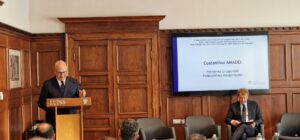On 19 November, an event entitled 'The application of the ETS in the LNG and BIOGNL sector' was held, organised by Assogasliquidi.
On this occasion, Costantino Amadei - President of the Assogasliquidi LNG Group and Member of Board of Vulcan - spoke about the entry into force of the new ETS legislation, where he emphasised the need to obtain a series of incentives or aids for the haulage sectors, which have paid a bit of a price in recent years due to soaring raw material prices at origin
Assogasliquidi's request is expressed in a three-year structural intervention that could lead hauliers to reinvest in the purchase of LNG and Bio-LNG vehicles, which, let us not forget, are fuels that are currently available and can serve the decarbonisation of both heavy and naval transport effectively, with technology that is already available, and which are also socially much less impactful than other fuels.
What does the new ETS2 standard say?
The ETS2 regulation is part of the European regulatory package called "Fit for 55"and represents a fundamental step in EU climate policy.
Unlike ETS1, which covers heavy industry and power generation, ETS2 aims to decarbonise two sectors traditionally considered difficult to cover: the road transport and the buildings.
An important part of the revenues generated by ETS2 auctions will be allocated to the Social Fund for Climate (FSC)which aims to support the most vulnerable citizens and businesses by financing investments in energy efficiency and zero- or low-emission mobility.
In this regard, Assogasliquidi is calling for a significant portion of the proceeds to be reinvested directly in the sector that generates them (i.e. transport and industry) to finance decarbonisation, by incentivising, among other things, the purchase of LNG and BIOGNL vehicles, fuels certified as sustainable and already available on the market.
